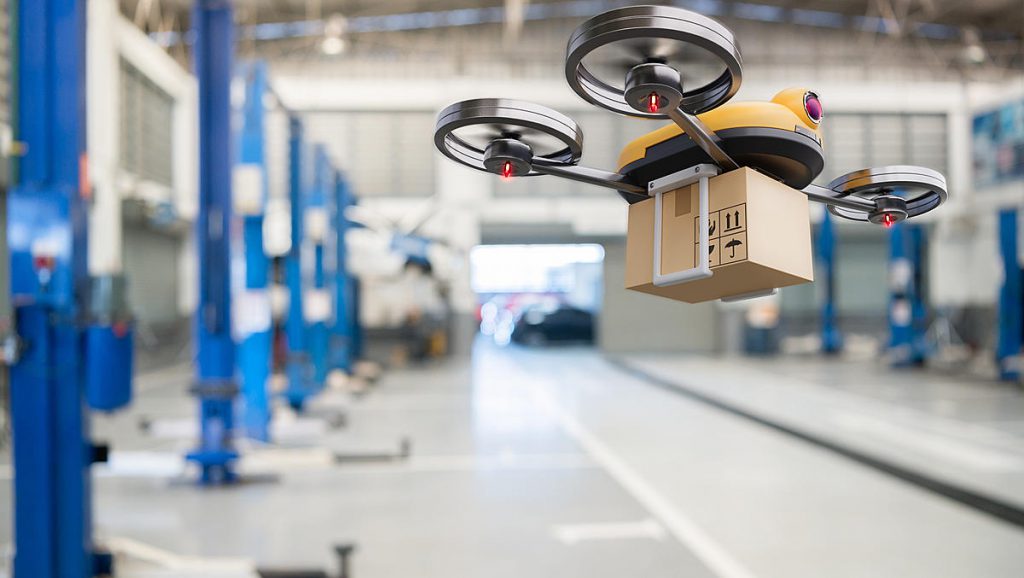[This article is originally published on analyticsinsight]

The responses to the COVID-19 pandemic and its impacts on societies and economies around the globe can’t be downplayed. Despite the fact that researchers have cautioned of quick-spreading ailments, most governments were underprepared and organizations of all sizes are asking workers to work from home or are confronting shutdowns (and at times, spiking demand).
Best Machine Learning and AI Courses Online
The epic coronavirus has expanded enthusiasm for robots, drones, and artificial intelligence, even as some testing of autonomous vehicles delays on open streets. These advances can help manage enormous staffing deficiencies in healthcare, manufacturing, and supply chains; the requirement for “social distancing;” and analysis and treatment. We don’t yet have the foggiest idea about the long-term effects, yet there are more instances of how robotics is addressing the challenges presented by the pandemic.
Read: How to productively working from home during lockdown?
Indeed, even in a turbulent market (and perhaps particularly in a fierce employment condition), financial investors appear to back robots. The most recent model: ForwardX Robotics, a Beijing-based robotics firm specializing in logistics, simply declared another round of Series B funding in the amount of $15 million, bringing the organization’s total funding to more than $40 million.
There are a lot of different models. SoftBank-supported BrainCorp, which makes robotic scrubbers for, among different applications, healthcare simply raised $36 million. Organizations large and small are growing how they use robots to increase social distancing and decrease the number of staff that need to truly come to work. Robots are likewise being utilized to perform roles workers can’t do at home.
In-demand Machine Learning Skills
Get Machine Learning Certification from the World’s top Universities. Earn Masters, Executive PGP, or Advanced Certificate Programs to fast-track your career.
Walmart, America’s greatest retailer, is utilizing robots to clean its floors. Robots in South Korea have been utilized to measure temperatures and deliver hand sanitiser. With health specialists notice some social distancing measures may be set up through 2021, robot labourers might be in more noteworthy demand.
Organizations that make cleaning and sanitizing products have seen demand soar. UVD Robots, the Danish manufacture of ultraviolet-light-disinfection robots, delivered several of its machines to medical hospitals in China and Europe. Food supplies and eateries offering takeaway are utilizing these machines all the more as well.
Experts state as more organizations re-open we can hope to see further adoption of this innovation, you may see robots cleaning your schools or workplaces. “Consumers presently care increasingly about their safety and the wellbeing and soundness of laborers,” says Blake Morgan, author of The Customer of the Future. Moves towards automation can keep them all healthier and consumers will reward organizations that do this.
There are still restrictions. Ms Morgan calls attention to that automated checkouts at groceries ought to lessen human communications but since numerous frameworks don’t function admirably or break effectively customers avoid them and go to human cashiers instead.
To reduce steady exposure between COVID-19 patients and caregivers and intensify screening, hospitals in India are going to robots of numerous sorts. Delhi-based AIIMS clinic has deployed a floor disinfectant and a humanoid robot in COVID-19 wards. Fortis Hospital, Bengaluru has likewise deployed an intelligent robot at its passage to screen everybody, including clinical staff, entering the premises.
As indicated by a UK-based data analytics firm, GlobalData, adoption of robots to treat COVID-19 patients is anticipated to grow in India because of the lack of PPE or personal protective equipment. Universal Robots has likewise observed demand for cobots or collaborative robots for manufacturing high-quality face masks in government-run assembly lines. Doctors are investigating how cobots can be utilized to remotely test patients for the virus to bring down dangers for healthcare employees.
The interactive humanoid robot deployed at AIIMS stands 92 cm tall, has cameras and sensors to distinguish obstructions and can monitor and collaborate with patients. The subsequent robot deployed at AIIMS can sterilize floor surfaces utilizing sodium hypochlorite solution. The two robots can move autonomously and work without human intervention.
The robot at Fortis uses face and speech recognition to pose questions and warm scanners to take temperature reading. When it has screened and cleared an individual, it gives a go to enter. If it distinguishes higher body temperature, it will alert the doctors and patients can counsel a doctor straightforwardly through the screen on the robot.
By and large, the market for autonomous mobile robots (AMRs) and autonomous ground vehicles (AGVs) is anticipated to produce over $10bn by 2023 as indicated by Interact Analysis and that forecast depends on information from before the COVID-19 pandemic.
This unquestionably didn’t happen overnight. The seeds of a robotic revolution have been growing for longer than 10 years, returning to research lab Willow Garage and the notable groundbreaking robotics research that started coming out of DARPA challenges in the mid-2000s. Collaborative robots, still a little part of the overall automation industry, have gotten insanely great at performing repeatable tasks around people. Mobile robots are zooming down logistic warehouse aisles and taking inventory of items at Walmart.
A 2017 report by worldwide experts McKinsey anticipated 33% of workers in the US would be supplanted via automation and robots by 2030. In any case, occasions like pandemics can possibly change all the courses of events and experts state it’s truly dependent upon people to choose how they need to incorporate this innovation on the planet.
Popular AI and ML Blogs & Free Courses
Conclusion
If you’re interested to learn more about bots, machine learning, AI, check out IIIT-B & upGrad’s PG Diploma in Machine Learning & AI which is designed for working professionals and offers 450+ hours of rigorous training, 30+ case studies & assignments, IIIT-B Alumni status, 5+ practical hands-on capstone projects & job assistance with top firms.









![Artificial Intelligence Salary in India [For Beginners & Experienced] in 2024](/__khugblog-next/image/?url=https%3A%2F%2Fd14b9ctw0m6fid.cloudfront.net%2Fugblog%2Fwp-content%2Fuploads%2F2019%2F11%2F06-banner.png&w=3840&q=75)
![24 Exciting IoT Project Ideas & Topics For Beginners 2024 [Latest]](/__khugblog-next/image/?url=https%3A%2F%2Fd14b9ctw0m6fid.cloudfront.net%2Fugblog%2Fwp-content%2Fuploads%2F2020%2F04%2F280.png&w=3840&q=75)
![Natural Language Processing (NLP) Projects & Topics For Beginners [2023]](/__khugblog-next/image/?url=https%3A%2F%2Fd14b9ctw0m6fid.cloudfront.net%2Fugblog%2Fwp-content%2Fuploads%2F2020%2F05%2F513.png&w=3840&q=75)
![45+ Interesting Machine Learning Project Ideas For Beginners [2024]](/__khugblog-next/image/?url=https%3A%2F%2Fd14b9ctw0m6fid.cloudfront.net%2Fugblog%2Fwp-content%2Fuploads%2F2019%2F07%2FBlog_FI_Machine_Learning_Project_Ideas.png&w=3840&q=75)